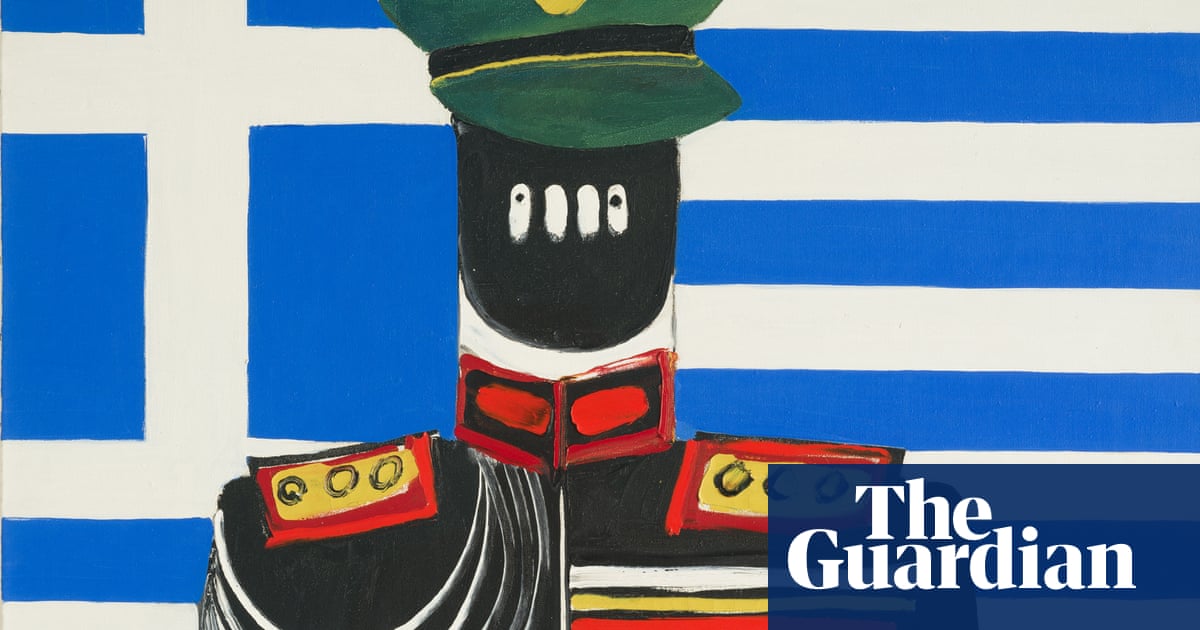Coups, crackdowns and chaos: art inspired by democracy – and the despots who overthrew it

🌈 Abstract
The article discusses a new art exhibition in Athens, Greece that explores the theme of democracy through the lens of the country's history with military dictatorships in the 20th century. The exhibition examines how artists in Greece, Portugal, and Spain responded to and depicted the suppression of civil liberties and the eventual restoration of democracy in their respective countries.
🙋 Q&A
[01] The Parthenon and the Erosion of Civilization
1. How do the paintings of the Parthenon by artist Rika Pana depict the symbol of Athenian democracy?
- Pana's paintings of the Parthenon accentuate the eventual ruin and perishability of the iconic temple, rather than its steadfastness, by depicting the pillars as plumes of black smoke against melancholy blue and muddy green backgrounds.
2. How does this reflect the broader theme of the exhibition?
- The sombre tone of Pana's paintings feels timely, as the exhibition explores how democracy may be under threat in countries once considered democratic strongholds, with voters tempted to swap it for strongman leadership.
[02] Dictatorships and the Restoration of Democracy
1. What are the key similarities between the military dictatorships that ruled Greece, Portugal, and Spain in the 20th century?
- The dictatorships in these countries were led by military men who cracked down on civil liberties, used torture on their enemies, and were Christian traditionalist rather than fascist-revolutionary in their fervour. Their anti-communism during the Cold War also guaranteed them recognition or support from the US.
2. How did democracy eventually triumph in each country?
- In Portugal, the turning point was a military coup in 1974. In Spain, democracy was restored gradually following Franco's death in 1975. In Greece, the junta's rule unravelled more quickly after student protests, a coup in Cyprus, and Turkey's invasion of the island.
3. How did artists in these countries respond to the repression under the dictatorships?
- Artists used similar symbols of protest, such as red carnations, and artistic styles like pop art to expose political violence and chronicle the events that led to the downfall of the dictatorships.
[03] The Diversity of Artistic Expressions
1. How does the diversity of artistic forms in the exhibition reflect the theme of democracy?
- The diversity of artistic forms suggests that there may not be a single "democratic" style in art. In some cases, the visual language used by artists to depict the story of democratic liberation has an anti-egalitarian bent, such as the portrayal of protesters as elevated, angelic figures.
2. What are some common themes observed in the artworks?
- Martyrdom is a surprisingly common theme, with artists depicting freedom fighters as ordinary citizens stylized as archangels or Jesus on the cross.
3. How does the exhibition's opening statement about "identifying the opponent" contrast with the democratic ideals it aims to represent?
- The opening statement, which sounds more like a pronouncement from an anti-liberal political theorist than a formula for modern democracy, is jarring and at odds with the exhibition's focus on the street protests that accompanied the shift to democracy in Portugal and Greece.